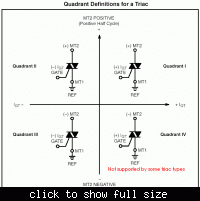Taswar
Junior Member level 1
Hi friends,
I usually fire Triacs with the help of MOC3021. Now I am going to make a small circuit where there is not enough space to put micro+MOC+Triac. That's why I want to drive the triac directly from micro as I've seen this done somewere. How should I proceed with this? I don't want to take any risk as I'm dealing with mains electricity.
Hope someone can help.
Thanks.
I usually fire Triacs with the help of MOC3021. Now I am going to make a small circuit where there is not enough space to put micro+MOC+Triac. That's why I want to drive the triac directly from micro as I've seen this done somewere. How should I proceed with this? I don't want to take any risk as I'm dealing with mains electricity.
Hope someone can help.
Thanks.
